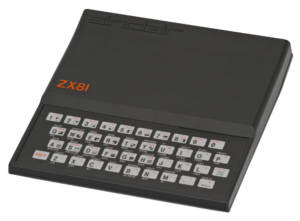Computers
Michelangelo Strikes
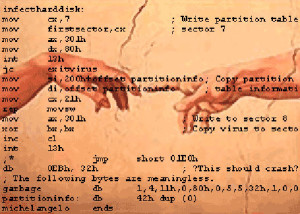
The Michelangelo virus, so-named because it activates on March 6, the birthday of Michelangelo, begins infecting computers. The virus will also make news in 1993. It was one of the earliest viruses to receive widespread media attention and also one of the first to prompt widespread hysteria. The irony of the name of the virus was that nothing in the virus’ code referenced Michelangelo. It is possible the virus author, who was never identified, did not know March 6th was Michelangelo’s birthday!
Sinclair ZX81 Launched
The Sinclair ZX81, the successor to the ZX80, is launched in England. Designed to be a low-cost introduction to home computing, the ZX81 was the first personal computer to be later sold in the United States for under $150. More than 1.5 million units were sold worldwide and created a lasting legacy among nascent programmers and early personal computer users.
Homebrew Computer Club Holds First Meeting
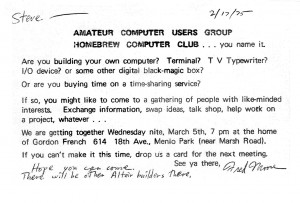
The invitation to the first meeting of the Homebrew Computer Club. Courtesy Wikimedia Commons
March 5, 1975
The Homebrew Computer Club holds its first meeting. Many people who played an important part in the early years of personal computing attended meetings of the Homebrew Computer Club during its history. Perhaps no meeting was more important than the one that took place almost exactly one year after the first: Steve Wozniak brought his design for what eventually becomes the Apple I computer.
First Cray Supercomputer Shipped
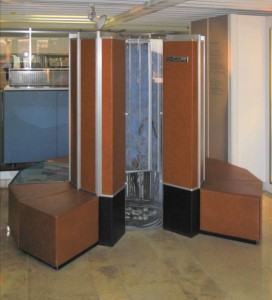
The first Cray-1 supercomputer is shipped to the Los Alamos National Laboratory in New Mexico. This supercomputer, which cost nineteen million dollars, will be used to design sophisticated weapons systems. The system is a cylindrical tower seven feet tall, nine feet in diameter, and weighs about 5.5 tons. The machine produced so much heat that it required a built-in freon-based refrigeration system. It required its own electrical substation to power it, at a cost of about US$35,000 a month.
Michael Dell Steps Down as CEO

Michael Dell, founder and CEO of Dell Computers, announces that he will step down from his his CEO role while retaining his position as Chairman of the Board. Dell president and COO, Kevin Rollins will assume his role. On January 31, 2007, (about 1 year after Dell fell behind Apple in market capitalization) Rollins will resign and Dell will resume his role as CEO due to the poor performance of the company.
On The First Day …
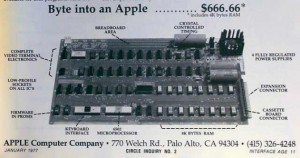
Steve Wozniak completes the basic design for the circuit board of a (relatively) easy-to-use personal computer. The next day he shows it to the Homebrew Computer Club, which Steve Jobs attends. Jobs realizes the potential and convinces Wozniak not to give away the schematics but instead produce printed circuit boards to sell. The two Steves form a company, which they name Apple, and Wozniak’s design becomes the basis of the Apple I computer. The rest, as they say, is history.
V.92 Introduced
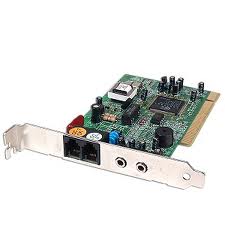
US Robotics introduces the V.92 modem standard. Given that broadband Internet had begun to take significant hold and that supporting V.92 required ISPs to upgrade their infrastructure, V.92 never really made much of an impact in the marketplace.
First Warrant to Search Computer Data
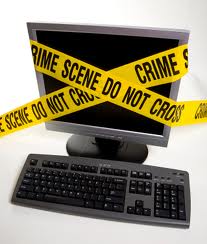
The first warrant is issued to search a computer’s storage. The warrant allowed the searching of:
- Key Punch Computer Cards, punched with a proprietary remote plotting program
- Computer Printout sheets of a proprietary remote plotting program
- Computer memory bank and other data storage devices magnetically imprinted with the proprietary computer program.
This event would lead to increasingly sophisticated methods of encryption to hide computer files from law enforcement agents.
Windows 2000 Introduced
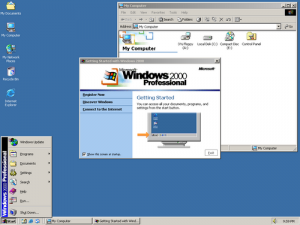
Microsoft introduces the latest version of the Windows NT line of operating systems, Windows 2000. While Windows 2000 did bring plug and play to the Windows NT line, it was targeted to the business market and not the consumer. It was not until Windows XP that Microsoft merged the NT line with the Windows 95/98 line. Unfortunately, Microsoft unleashed Windows ME upon unsuspecting consumers in the meantime. Sigh.
IBM Portable PC Introduced
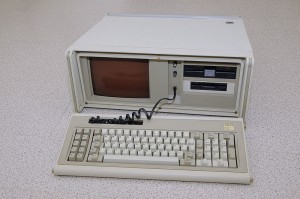
IBM introduces the IBM Portable Personal Computer, an early portable computer. It featured a 4.77MHz Intel 8088 processor, 256KB RAM, a 9 inch amber monitor, a 5.25″ floppy drive, and the DOS 2.1 operating system. It weighed 30 pounds and cost $2,795. Try setting that on your lap.

